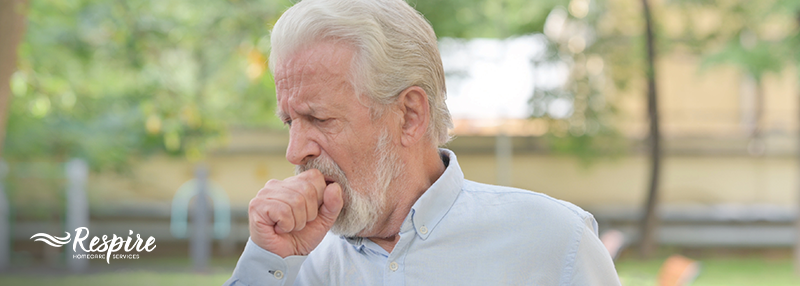Respire Homecare
Updated 3:41 PM CDT, Fri October 24, 2025
Published Under: COPD General Health Tips Safety Tips

Fall brings crisp air and a reprieve from the summer heat, but it also brings seasonal allergens and weather shifts that can aggravate respiratory conditions like COPD and asthma.
At Respire Homecare, we understand how important it is to stay ahead of these triggers to maintain comfort and avoid flare-ups. Here are five practical tips to help you breathe easier this season.
1. Watch Out for Ragweed and Mold
Fall in the Midwest is the peak time for ragweed pollen and mold spores. Ragweed can travel hundreds of miles, and mold thrives in damp, humid environments — like ones that can be found in your home. To reduce your exposure to these harmful allergens:
- Close your windows during high pollen days.
- Install a HEPA filter at home.
- Shower and change clothes after spending time outdoors to remove any allergens that may be attached to you.
- Try to plan yardwork for days when allergens are less likely to be airborne.
2. Prepare for Temperature Swings
Sudden drops in temperature can make breathing more difficult for those with COPD or asthma by constricting the airway. Cold air can also increase mucus production, which triggers coughing. Give your lungs some protection by:
- Wearing a scarf or mask over your nose and mouth while outside.
- Using a humidifier at home in tandem with your heater to prevent dryness.
- Keep an eye on weather forecasts and try to plan outdoor activities during warmer parts of the day.
3. Adjust CPAP and Nebulizer Use for Seasonal Changes
Cold, dry air can affect how your respiratory equipment performs. If you use a CPAP or nebulizer:
- Make sure the humidifier settings are adjusted properly to keep airways moist.
- Clean your equipment properly and frequently to prevent mold buildup.
- Talk to your respiratory therapist about any seasonal adjustments to your treatment plan.
4. Stay Active and Safe
Fall is a beautiful time to enjoy the outdoors, but being active in the cold air can trigger symptoms. To avoid a flare-up while staying active:
- Warm up indoors before you head outside.
- Choose low-impact activities like walking or stretching.
- If prescribed, make sure your rescue inhaler or emergency meds are always easily accessible.
- Avoid exercising outdoors when pollen counts are high.
5. Keep Communication Open with Your Care Team
As the seasons shift, so too may your respiratory needs. Keep in touch with your healthcare provider to:
- Review your asthma or COPD action plan.
- Update prescriptions as needed.
- Talk through any changes in symptoms.
- Address any concerns with your rescue equipment or emergency medications.
Breathe Easier This Fall
Managing COPD and asthma during seasonal transitions doesn’t have to be overwhelming. With a few proactive steps, you can enjoy the beauty of fall while keeping your lungs protected. If you have questions about respiratory equipment or need support adjusting your care routine, Respire Homecare is here to help.
Comments